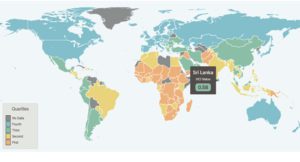Table of Contents
The Advancement of UPI in Bilateral Links
India’s Unified Payments Interface (UPI) system has garnered attention for its role in advancing bilateral links with other countries, including Singapore and the United Arab Emirates, according to Jay Shambaugh, Under Secretary of US Treasury for International Affairs. Speaking at Harvard Law School, Shambaugh highlighted the ambition of interlinking fast payment systems multilaterally and the ongoing efforts to upgrade legacy payment systems.
Features and Objectives
The UPI system, created by the National Payments Corporation of India (NPCI), aims to provide a secure, seamless, and instant payment system to facilitate easy transactions for individuals and businesses. Its key features include:
- Interoperability: UPI enables customers to link multiple bank accounts to a single mobile application.
- Instant Transfers: Users can make real-time transfers directly from their bank accounts.
- Secure Authentication: UPI incorporates two-factor authentication to ensure secure transactions.
- Easy Integration: The UPI interface can be integrated into various payment apps, facilitating widespread adoption.
The objectives of UPI include:
- Financial Inclusion: UPI seeks to provide access to digital payment services to all sections of society.
- Promoting Cashless Transactions: UPI aims to reduce the dependency on cash and promote digital transactions across the country.
- Convenience: The system provides a simplified and user-friendly platform for making payments.
Effects and Benefits
The introduction of UPI has had several positive effects on the Indian economy and its citizens:
- Convenience: UPI offers a hassle-free and efficient method of transferring funds, eliminating the need for physical cash or traditional payment methods.
- Financial Inclusion: The system has played a crucial role in bridging the gap between the banked and unbanked population, providing easy access to digital payment services.
- Promoting Digital Economy: UPI has played a crucial role in driving the adoption of digital transactions, encouraging a cashless economy.
- Reduced Costs: The use of UPI can help individuals and businesses save on transaction costs compared to traditional banking methods.
Current Landscape and Future Innovations
The UPI system is continuously evolving to meet the changing needs of the society and adapt to technological advancements. Shambaugh mentioned that jurisdictions are exploring future states of money and payments, such as cross-border Central Bank Digital Currencies (CBDCs) and Distributed Ledger Technology (DLT)-based payments. These innovations present opportunities for designing more efficient and transparent cross-border payment systems.
Fun Fact
Did you know that as of March 2021, UPI in India recorded over 2.7 billion transactions, amounting to a total value of ₹5.04 trillion (approximately $68 billion)? This highlights the widespread adoption and popularity of UPI in the country.
Mutiple Choice Questions
1. What is the purpose of India’s Unified Payments Interface system (UPI)?
a) To advance bilateral links with other countries
b) To upgrade legacy payment systems
c) To facilitate cross-border payments
d) All of the above
Explanation: The purpose of India’s Unified Payments Interface system (UPI) is to advance bilateral links with other countries, upgrade legacy payment systems, and facilitate cross-border payments. This was stated by a U.S. treasury official in a speech at Harvard Law School.
2. Which countries are mentioned as having bilateral links with India’s UPI system?
a) Singapore and the United Arab Emirates
b) ASEAN countries
c) United States and China
d) European Union and Australia
Explanation: India’s Unified Payments Interface system (UPI) stands out in advancing bilateral links with Singapore and the United Arab Emirates, as mentioned by a U.S. treasury official in the given information.
3. What is one advantage of implementing the ISO 20022 messaging standard for payment processing?
a) Faster messaging
b) Lower payment failure rates
c) More data-rich transactions
d) All of the above
Explanation: Implementing the ISO 20022 messaging standard for payment processing offers advantages such as faster messaging, lower payment failure rates, and more data-rich transactions, as stated by the U.S. treasury official in the information provided.
4. What is the focus of the G20 Payments Roadmap?
a) Upgrading legacy payment systems
b) Cross-border CBDCs and DLT-based payments
c) Payment system interoperability and extension
d) Increasing efficiency while reducing risk
Explanation: The G20 Payments Roadmap focuses on payment system interoperability and extension, which ensures facilitation of better payment system connectivity and operational alignment along key corridors, according to the U.S. treasury official in the given information.
5. What additional features could be included in future cross-border payment systems?
a) Transparency of costs and institutions in the payment chain
b) Atomic, instantaneous settlement
c) Programmable payments
d) All of the above
Explanation: Additional features that could be included in future cross-border payment systems include transparency of costs and institutions in the payment chain, atomic, instantaneous settlement, and programmable payments. These features aim to increase efficiency and reduce risk, as mentioned by the U.S. treasury official in the provided information.
Brief Summary | UPSC – IAS
India’s Unified Payments Interface (UPI) system is leading the way in advancing bilateral links with other countries such as Singapore and the United Arab Emirates, according to Jay Shambaugh, Under Secretary of US Treasury for International Affairs. Shambaugh highlighted that the G20 Payments Roadmap is focusing on enhancing payment system connectivity and operational alignment along key corridors, which enables the instant transfer and settlement of payments across systems. He also noted that jurisdictions are exploring future states of money and payments, including experiments with cross-border central bank digital currencies (CBDCs) and distributed ledger technology (DLT)-based payments. Overall, the goal is to increase efficiency while reducing risk in payment systems.


